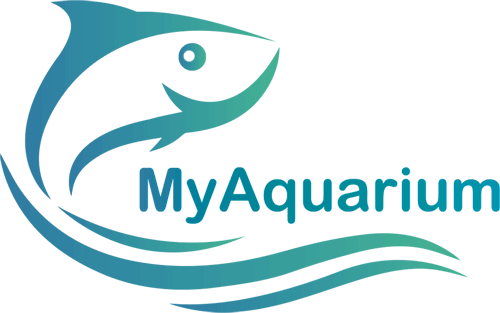The Emerald Crab (Mithrax sculptus) is one of the most common invertebrates used to compose the cleaning team of many marine fish tanks. The species is quite popular because it helps keep the aquarium clean and loves to feed on Bubble Algae.
In the wild, the Emerald Crab is found in the Caribbean Sea and Gulf of Mexico. Its range extends from the Bahamas and southern Florida to northern Brazil at depths that can reach 54 meters. The species usually lives in coral reefs.
The Emerald Crab, as the name implies, has very bright green tones. Its flat and compact body has very hairy paws. The body of this animal is almost flat, allowing it to fit in very tight spaces. At the end of their paws, they have very strong attachment points, making them able to stay fixed in one place even in the strongest currents of water.
Keep reading the post to learn about the main characteristics and needs of this species.
Technical Details
Name: Emerald Crab, Mithrax Crab;
Scientific Name: Mithrax sculptus (Lamarck, 1818);
Family: Majidae;
Species Origin: Caribbean Sea and Gulf of Mexico;
Length: Up to 2 inch;
Life Span: 2- 4 years;
Care Level: Easy;
Water Parameters
pH: Maintain the pH of the water between 8.1 – 8.4;
Water Hardness: Between 8° – 12°dH;
Temperature: Must be kept between 21- 27°C (Celsius);
Care
Food
One of the best things about the Emerald Crab is that he is not a picky eater. Although it’s often sold as a herbivore, it’s actually omnivorous and requires very little care when it comes to feeding patterns.
Basically, they will eat whatever is in the tank. This can include food leftovers from other fish or naturally growing algae.
However, it’s wrong to think that they don’t need a specific diet because they are scavengers. Although they have modified claws to feed on all types of algae, they must have a balanced diet to stay healthy.
In fact, if the Emerald Crab is not given a balanced diet, it may start to feed on the corals in your tank. Along with that, it can also start attacking smaller fish, shrimp, or anything that crosses its path.
You can provide frozen foods such as mysis shrimp as well as vegetables and fruits, as well as invertebrate bottom food.
Temperament / Behavior
Both in the wild and in captivity, the Emerald Crab has a nocturnal behavior, so it’s important that the fish tank has plenty of rocks to create hiding places. This will allow the crab to seek comfort in dark corners and crevices.
Once adapted to the tank, they can slightly change their behavior night/day. They will come out during the day and you will see them much more often.
In an fish tank, the Emerald Crab will focus on cleaning algae, particularly Bubble algae. Unlike some algae-eating fish, these crabs can crawl through tight spaces and eliminate them all in no time. They will make an excellent addition to your aquarium cleaning crew.
The Emerald Crab can be aggressive towards each other. Therefore, if you have a small tank, it’s better to have just a single specimen or a couple.

Molting Process
Like all crustaceans, they need to “change” in order to grow. Over time, as they grow beyond the size of the existing shell (exoskeleton), they begin to detach from it. This process is called molting.
Once the outer shell is left behind, it’s common to think the crab is dead, but it’s not. During this time period, it will hide in rocks or crevices until a new shell replaces the old one and becomes hard (mineralized).
Note: Don’t throw away old shells. They contain a lot of minerals and crabs will happily eat them after a while. Like all snails, shrimp and crayfish, crabs also require calcium for their exoskeleton.
However, the molt frequency, growth and survival of crustaceans depend on diet, temperature and water quality.
Tank Mates
The Emerald Crab, like most crabs, is an opportunistic animal. Their herbivorous or carnivorous tendencies depend on the food available. Therefore, if they have access to easy, more nutritious foods, they may choose them over tank corals.
So, are they good for tanks with coral reefs? I would keep an eye on them! Also, choose females as they are smaller and less aggressive.
The Emerald Crab can be kept with small, non-aggressive fish that inhabit other areas of the tank. Avoid keeping it with bottom fish, as it can end up injuring them with its claws.
In addition, having too many large fish can put the crab at risk. Big fish often consider them prey, so make sure you only choose species that are more peaceful and not prone to attacking them.
Breeding / Mating
Unfortunately, there is not much information about the reproduction of this species in captivity. Even after many years, still experienced hobbyts aren’t successful in breeding these animals.
Fish Tank Size
The fish tank needs to have at least 10 gallon for a Emerald Crab.
These crabs only require a stabilized tank with lots of live rocks and reefs so they can hide and look for algae. They are very easy to care for and undemanding.
Finally, don’t forget to acclimate them before placing them in the tank. If you’re not careful when doing this, you could risk your crabs dying from the water shock.
References
Calfo, Anthony & Fenner, Robert (2003). Reef Invertebrates – An Essential Guide to Selection, Care and Compatibility.
Kurtz, Jeffrey (2005), TFH Publications. The Simple Guide to Mini-Reef Aquariums – Modern Reefkeeping Practices, Coral Compatability.
Advances in Breeding and Rearing Marine Ornamentals. Journal of the World Aquaculture Society42(2):135-166. April 2011.
Evolutionary transformations of the reproductive system in Eubrachyura (Crustacea: Decapoda). Kienbaum, Katja. Dissertation. 2019.
A rearing system for the culture of ornamental decapod crustacean larvae. Aquaculture. Volume 218, 27 March 2003, Pages 329-339.




